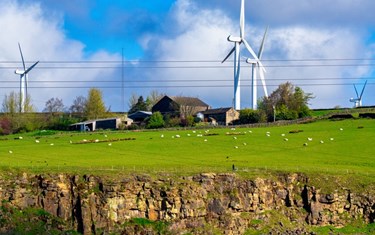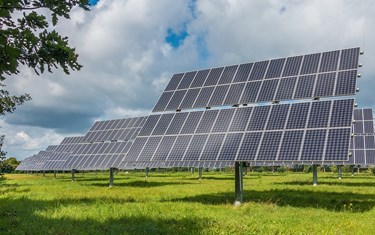 This is the Royal Town Planning Institute response to the Department for Energy Security and Net Zero’s consultation ‘Planning for new energy infrastructure: revisions to National Policy Statements’, which can be found here.
This is the Royal Town Planning Institute response to the Department for Energy Security and Net Zero’s consultation ‘Planning for new energy infrastructure: revisions to National Policy Statements’, which can be found here.
About the RTPI
About the RTPI The RTPI champions the power of planning in creating sustainable, prosperous places and vibrant communities. We have over 27,000 members in the private, public, academic and voluntary sectors. Using our expertise and research we bring evidence and thought leadership to shape planning policies and thinking, putting the profession at the heart of society's big debates. We set the standards of planning education and professional behaviour that give our members, wherever they work in the world, a unique ability to meet complex economic, social environmental and cultural challenges.
Read the RTPI's full response below or download it in PDF here.
General comments
The RTPI sympathises with the intention to ‘streamline’ planning processes but cautions that projects could be delayed when communities are not given sufficient opportunities to genuinely engage with and shape proposals. Real consultation, when delivered well, can reduce local opposition to, and improve the delivery of, critical projects. In our view, this must remain a key pillar of developing energy infrastructure and reinforcing our energy security.
We are not against the idea of Critical National Priorities as a clear indication of national priorities and a weighting in the decision-making system towards the delivery of offshore wind where it is sensible. However, this must not upset the ‘planning balance’ – i.e. the genuine consideration of a project’s national and local costs and benefits. The Secretary of State should be mindful of this when making decisions on new projects in line with the proposed policy changes.
Finally, offshore wind should be just one part of the energy mix – opportunities for onshore wind and other grid infrastructure should be planned for strategically, spatially and across different regulatory regimes (i.e. the town and country planning, NSIP, and marine planning regimes). Indeed, we are heartened by the government’s reference to the need for a more strategic approach to planning electricity network infrastructure. Our 2019 report, Planning for a Smart Energy Future, looks at how spatial planning can be used to achieve this, make the most of existing infrastructure across the grid, reduce demand, and link new smart technology.
Critical national priority for offshore wind
1. Do you agree with the glossary definition for CNP?
The RTPI welcomes the importance being placed upon decarbonising our energy generation and transmission as a core pillar of our net zero future. However this cannot come at the expense of: a) the Secretary of State continuing to properly assess the costs and benefits of proposed schemes, and b) genuine community engagement.
While it is reasonable to shift the planning and decision making ‘balance’ in favour of national priorities related to climate change, the Secretary of State must continue to properly weigh the merits and residual impacts of projects. Not doing so could result in unacceptable local impacts which build cumulatively over time as new projects come forwards.
There is also a danger that an assumption of behalf of scheme promoters that their CNP projects will go ahead regardless of levels of community benefits or engagement will result in worse infrastructure and worse outcomes for local communities.
Indeed, the introduction of the CNP creates a greater need for comprehensive and meaningful community engagement. If offshore generation and onshore transmission are to be given even greater political weight through the CNP, community engagement must be at the heart of this process. This is not only to maximise the benefits of projects for communities but also to streamline the consenting process by establishing meaningful relationships between projects and the local people.
Engagement must be an open channel in which communities can have their views heard: It must to ensure that projects are happening for communities rather than to them. These benefits can only be fully realised through extensive engagement with all community groups to ensure that their needs are well represented.
We look forward to seeing the updated guidance for community engagement that was outlined in the NSIP Action Plan earlier this year.
2. Do you agree with the new guidance added to draft EN-1, draft EN-3 and draft EN-5 on the CNP for offshore wind, supporting onshore and offshore network infrastructure, and related network reinforcements? Specifically, do you agree that this policy will:
a. support government ambitions to deploy up to 50GW of offshore wind by 2030, including up to 5GW of floating wind?
The RTPI believes that the changes to EN-1, draft EN-3 and draft EN-5 will in theory help to incentivise the development of up to 50GW of offshore wind by 2030, there are still shortcomings to these changes.
Firstly, in relation to onshore infrastructure, the NPS only says what is required and not where it should go. The RTPI continues to ask for NPSs to adopt a spatial element which would give a greater understanding of where these critical improvements and additions to our infrastructure are required. This spatial element would add security and certainty for developers, local authorities and other government bodies at different levels. Greater clarity and direction provided in this way would also make decisions less prone to legal challenge, potentially speeding up delivery.
Our grid capacity is currently one of the biggest blockers to decarbonising our electricity generation and any changes to the NPS should help to provide clear direction on how we are going to reinforce our grid and where that work is required.
b. support government objectives to streamline the offshore wind consenting process?
In ‘How to design an infrastructure strategy for the UK’, research from the Institute for Government suggests that a sense of procedural unfairness – i.e. that decisions are pre-determined and imposed on communities - is a key driver local opposition to projects. ‘Streamlining’ while failing to address this will be likely to build opposition, leading to delay and uncertainty.
There are some cases of best practice in community engagement which could be replicated. Hornsea Three, for example, was commended for its community engagement in the 2021 National Infrastructure Planning Association awards for building trust and confidence amongst stakeholders throughout the project. The project established a Community Benefit Fund, which is worth £700,000 over a ten-year period.
Incorporating community benefits, such as discounted energy bills, job, retraining programmes, community investment schemes and local economic development could be another way to help ensure that there are positive relationships between the communities and projects in question. Without meaningful community engagement and benefits, the consenting process is unlikely to be streamlined to any significant degree.
Offshore Wind Environmental Improvement Package
3. Do you agree with the new text included in Section 2.8.103 of draft EN-3 relating to the Offshore Wind Environmental Standards?
We welcome the efforts to help accelerate deployment whilst enhancing the marine environment.
4. Do you agree with additions made in relation to strategic compensation and seeking the views of the SNCBs and Defra Secretary of State in Section 2.8.282 of draft EN-3 relating to the Compensatory Measures?
The RTPI is concerned about the additions regarding compensations.
Used in conjunction with the concept of CNPs, the strategic compensation measures could result in developers utilising project benefits and compensation to outweigh all environmental concerns, even when an objective impact assessment might find the environmental impacts of a project to be unacceptable.
Whilst we support the NPS’s desire to streamline the consenting process, and it is reasonable to tilt the decision making balance towards the delivery of national net zero infrastructure, this cannot be at the cost of effective decision making about the actual impacts of projects.
Civil and Military Aviation and Defence Interests
5. Do you agree that Section 5.5 of draft EN-1 relating to Civil and Military Aviation and Defence Interests, provides a more balanced and up-to-date view on offshore wind impacts of radar, and represents the needs of different stakeholders accurately?
No comment.
Need for new electricity network infrastructure
6. Do you agree with new guidance added to Section 2.8 of draft EN-5 on the inclusion of strategic planning as a consideration to support the needs case for electricity network infrastructure?
We welcome and support the inclusion of strategic planning and the recognition of the government-led Offshore Transmission Network Review and the Ofgem-led move to a Centralised Strategic Network Planning. The adoption of more strategic approaches to how we plan our energy generation and transmission networks must be seen as a positive step. However, this strategic approach should go beyond just aligning offshore energy transmission and instead align all forms of low carbon energy generation with other key subsectors of planning, including transport, housing and other aspects of infrastructure.
Our report, Planning for a Smart Energy Infrastructure, detailed the benefits that can arise from creating a system-wide strategic approach to energy planning. Interlinking planning for the grid, battery storage, local generation and major projects can help to create efficiencies and more rapidly decarbonise our energy system.
7. Draft EN-5 includes a strong starting presumption for overhead lines for electricity networks developments outside nationally designated landscapes, which was consulted on in 2021. Do you agree?
While in some cases the use of overhead lines will be most effective, this may not always be the case. The costs and benefits of different approaches to different schemes in different places should still be weighed.
If it is indeed the case that overhead lines are most effective, efficient and produce local environmental outcomes in some cases, community engagement should still be an important element of the decision-making process: Communities will need to be aware of the trade-offs and material constraints underlying the choice of approach.
Where overhead lines are utilized, promoters and government should also carefully consider: a) the potential for current policy on overhead lines, which prioritises their routing through areas of lower environmental quality, to disproportionately effect disadvantaged communities, or areas which are undergoing regeneration; and b) Opportunities community benefits to create a positive relationship and ease the consenting process.
Other Comments
8. Do you have any comments on any aspect of the draft energy NPSs or their associated documents not covered by the previous questions?
Rather than generally focusing upon individual forms of renewable energy generation, national policy, across both the town and country planning and NSIP regimes, should focus upon the creation of an integrated and resilient energy system which draws on a suite of renewable energy technologies, as we argued in our report, Planning for a Smart Energy Infrastructure.
This should include onshore wind, which currently receives little policy support.
We are pleased to see that DLUHC recently launched a consultation on Developing local partnerships for onshore wind in England, in relation to the Town and Country Planning Regime, and will be responding to it.


